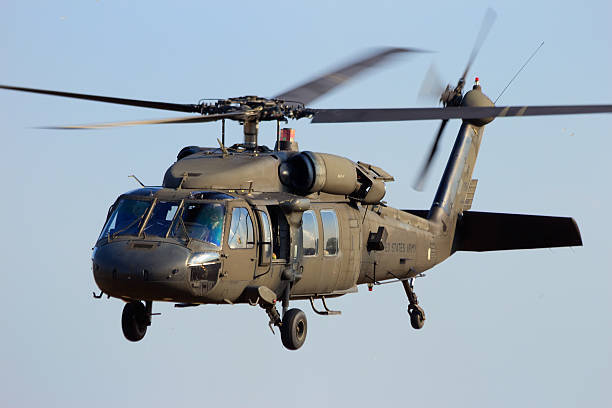U.S. Army’s Future Long Range Assault Aircraft
Sources: Bloomberg Business; Alexander Soule; CT Insider
Sikorsky announced this week that they had lost the contract bid for the U.S. Army’s Future Long Range Assault Aircraft, a program seen as the successor to the Black Hawk helicopter.
Texas-based Bell Textron’s V-280 Valor tilt-rotor was chosen over the Defiant-X, a dual Sikorsky-Boeing craft “purposefully designed for the U.S. Army’s Future Long Range Air Assault competition, a top modernization priority.” The contract will initially be worth up to $1.3 billion, and eventually replace about 2,000 Black Hawks.
Sikorsky and Bell had begun engine tests ahead of an anticipated competitive “fly off” by 2025 for a contract to produce an armed scout. The Army said it would lean toward using drones and space-based surveillance systems.
The significance of the contract loss to both Sikorsky and the state was evident in the spate of “I am disappointed” statements from lawmakers that were issued within hours of the announcement.
How real is the risk to the 7,900 jobs at Sikorsky’s Stratford facility and its overall 13,000-person workforce?
It’s not clear but there’s a lot at stake for Sikorsky and the state’s economy. In addition to the main Stratford plant, Sikorsky maintains administrative offices in Shelton and Trumbull and a Bridgeport assembly facility. Not to mention the 250-plus suppliers the company buys from across the state.
Also on the line is the $50 million in incentives the state of Connecticut pledged to Sikorsky if it won the U.S. Army contract. The funding was contingent on a commitment by Lockheed Martin to keep Sikorsky’s headquarters in Stratford.
Several days later it was announced some of the funding for that armed reconnaissance helicopter could be diverted to Sikorsky’s Stratford and Bridgeport plants, if approved by Congress, for a fresh batch of Black Hawk helicopters.
The funding would bring at least five extra years of steady production as Sikorsky scouts out any other potential suitors for an alternative helicopter design rejected by the Army. Under Secretary of the Army Gabe Camarillo said Friday in an interview that the decision would benefit Sikorsky with another big block of Black Hawk production in the offing. Under Sikorsky and parent Lockheed Martin’s existing Pentagon production contract, Sikorsky is producing 255 Black Hawk helicopters and variants over five years, including about fifty in the current fiscal year running through October.
“We crafted this aviation re-balancing strategy with very much a focus on the aviation industrial base — focusing also on Sikorsky in Stratford,” Camarillo told CT Insider. “We’re going to continue to invest in significant upgrades, design work and other excursions to continue to improve the performance of Black Hawks for many years to come.”
Some of the new UH-60M Black Hawks would be deployed to Army National Guard units, Camarillo added. Those units had been slated to get UH-60V Black Hawks, older aircraft that have been getting modernized at an Army facility in Corpus Christi, Texas.
With the Army now backing out of its newest plans for a reconnaissance helicopter, Sikorsky has no major new program left to plug into its Stratford production line after it completes the CH-53K King Stallion helicopter fleet for the U.S. Marine Corps, less than two decades from now. That leaves the Connecticut giant reliant for the time being on replacing existing helicopters that age out of the fleet or do not survive otherwise to their sunset years — and hoping the Pentagon will see the appeal in time of its newer helicopter prototypes.
Lockheed Martin did not make a Sikorsky official available on Friday to discuss how the Army’s decision could impact Sikorsky’s Connecticut operations, referring questions to the Army.
State Rep. Joe Gresko, D-Stratford, held out hope that the Army’s renewed commitment to the Black Hawk and continued international sales would benefit Sikorsky in Stratford, while noting its development of autonomous flight systems it has demonstrated on Black Hawk helicopters. “Locally and statewide they are a top priority,” Gresko told CT Insider on Friday. “We want them to stay here.”
With drones, helicopters and tilt-rotors all major components of the U.S. military today, it is anyone’s guess how emerging technologies could influence future purchases. Camarillo offered no new details on the Army’s selection of the Bell V-280 Valor for the 2022 Future Long-Range Assault Aircraft over a rival design from Sikorsky and Bell, but said he sees a long-term role for the Black Hawk, alongside the V-280 Valor and Boeing helicopters the Army uses for varying roles.
“That went through a very comprehensive process — and selection of the ultimate vendor that won was based on the best value determination, as we always do in these large-scale developmental competitions,” Camarillo said. “It’s not based on how any one platform performs in one specific mission set or in one theater. It is a combination of factors that get incorporated and factored over a long period of time.”
“We did not want to see, for example, the drop-off in production at Sikorsky in Connecticut in regards to Black Hawks,” Camarillo said. “We felt that it was more important to provide certainty and a revenue stream for Sikorsky to be able to plan work load for years to come.”
But Sikorsky faces another gap when it hits the back half of CH-53K King Stallion production more than a decade from now. The Department of Defense wants as many as 200 King Stallions from Sikorsky, which are now under production in Stratford at a cost of $174 million each, according to the most recent estimates by the Government Accountability Office. That program could be worth $35 billion over two decades for Lockheed Martin and Sikorsky.
Editor’s Note: Calls were placed to Paul Jackson, Director of Communications at Sikorsky. To date he has not returned our calls.

